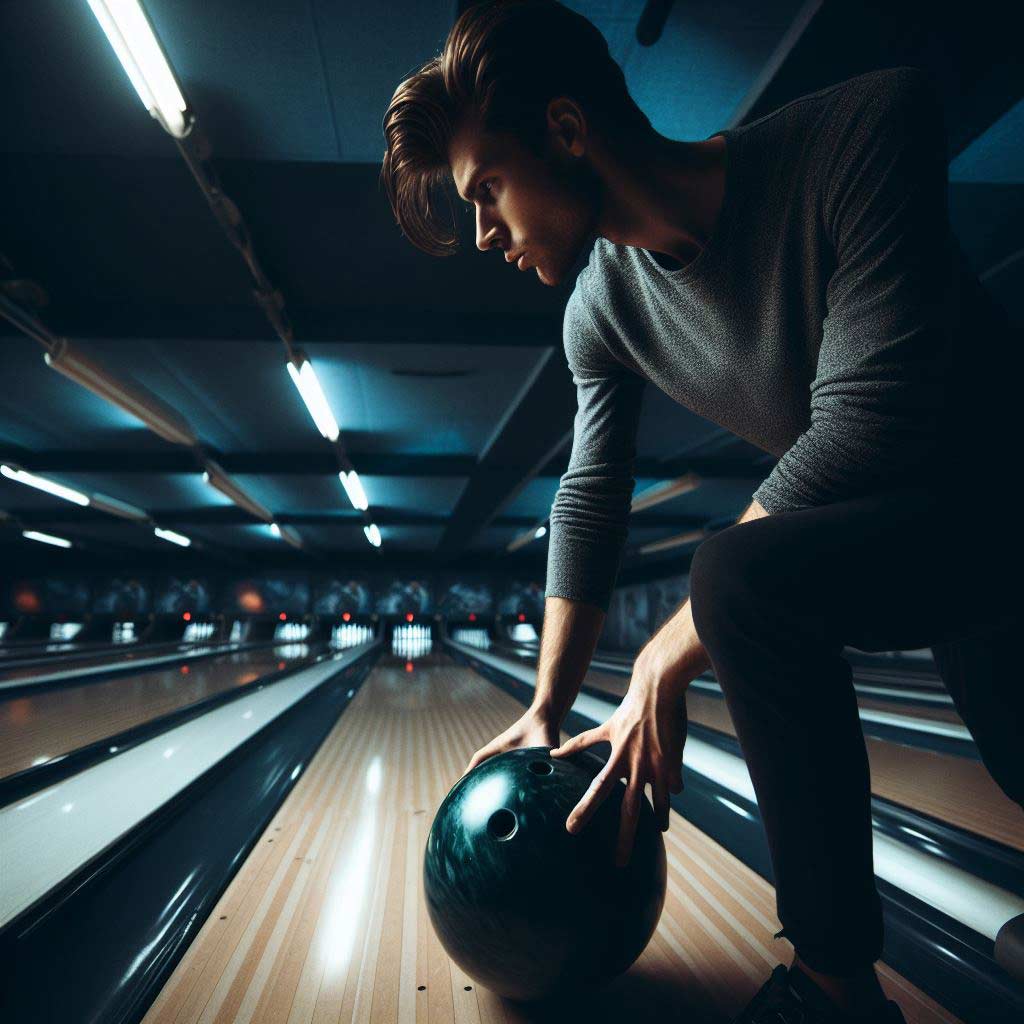If you’re looking to experience the fun and challenge of a unique twist on a classic game, then 9 pin bowling is definitely worth trying. While 10 pin bowling may be the more widely known version, 9 pin bowling is gaining popularity as an engaging alternative that offers its own set of rules and strategies.
At its core, 9 pin bowling involves knocking down 9 pins arranged in a diamond formation, rather than the traditional 10 pin setup. This small difference actually creates a whole new dynamic that appeals to seasoned bowlers and newcomers alike. To truly enjoy the 9 pin experience, however, it’s important to have the lane properly set up.
In this comprehensive guide, we’ll cover all the essential elements needed to configure an optimal 9 pin bowling lane, from the lane dimensions to the pin placement.
We’ll also share expert tips to help you get the most out of your 9 pin bowling sessions. Whether you’re setting up a lane at home or preparing for a tournament, this post has you covered.
The Essentials of a 9 Pin Bowling Set Up
While the basic concept of knocking down pins with a ball is the same, there are some key differences in the equipment and layout when it comes to 9 pin bowling. Let’s take a closer look at the core components that make up a 9 pin bowling set up.
The Bowling Lane
The dimensions and construction of a 9 pin bowling lane differ slightly from a traditional 10 pin setup. A standard 9 pin bowling lane is 42-45 feet long and 3.5-4 feet wide. This compact size contributes to the unique challenge of the game, as the shorter distance requires more precision and control.
The lane surface is typically made of wood, just like 10 pin lanes. However, some 9 pin bowling alleys may use synthetic materials for a more durable and low-maintenance option. Regardless of the specific material, the surface should be properly conditioned and maintained to ensure optimal ball roll and pin action.
An important consideration for the 9 pin lane is the slope and angle. Unlike 10 pin bowling where the lane is perfectly flat, 9 pin lanes are designed with a slight incline or “crown” in the middle.
This crown can range from 1/2 inch to 1 inch in height, tapering off towards the gutters. The purpose of this crown is to create a more dynamic ball reaction and encourage more angled shots.
The Bowling Pins
Of course, the most distinctive element of a 9 pin bowling setup is the pins themselves. Instead of the familiar 10 pin diamond, 9 pin bowling uses a diamond formation with 9 pins. These pins are slightly larger than their 10 pin counterparts, typically measuring 15.75 inches tall and 5.5 inches in diameter.
The pins are arranged in a diamond pattern, with one pin at the front, two pins in the second row, three pins in the third row, and three pins in the back row.
The spacing between the pins is also a bit tighter, with around 12 inches between each pin. This compact formation makes it more challenging to knock down all 9 pins in a single shot.
Maintaining the condition and alignment of the 9 pins is crucial for consistent gameplay. The pins should be inspected regularly for any cracks, chips or other damage that could affect their performance.
Additionally, the pin setting mechanism needs to be calibrated to ensure the pins are placed in the exact positions specified by the 9 pin bowling rules.
The Bowling Ball
While you can technically use a standard 10 pin bowling ball for 9 pin play, serious 9 pin bowlers often opt for a ball specifically designed for the game. These 9 pin balls typically weigh between 8-10 pounds, which is lighter than the 10-16 pound balls used in traditional bowling.
The size and hole drilling of a 9 pin ball is also customized for the game. The ball diameter is usually around 8.5 inches, slightly smaller than a 10 pin ball. And the finger/thumb hole configuration is adjusted to provide better control and comfort for the shorter throwing distance.
When selecting a 9 pin bowling ball, it’s important to consider factors like the ball’s core design, cover stock, and finish. Certain ball characteristics can enhance the ball’s hook potential and pin-carrying power – essential elements for knocking down all 9 pins efficiently.
Proper ball care and maintenance is also crucial for 9 pin bowling. This includes regularly cleaning the surface, applying conditioning treatments, and making any necessary adjustments to the fit and drilling. Taking good care of your 9 pin ball will help ensure optimal performance and longevity.
Accessories and Equipment
Beyond the lane, pins, and ball, there are some additional accessories and equipment that are commonly used in 9 pin bowling:
- Ramp or Foul Line Marker: Since 9 pin bowling is often played by younger bowlers or those with physical limitations, a ball ramp or foul line marker can be extremely helpful. These devices allow the player to simply roll the ball down the lane without having to approach the foul line.
- Scoring Equipment: While some 9 pin bowling alleys have electronic scoring systems, many rely on manual scorekeeping. This may involve things like a chalkboard, score sheets, and a means of keeping track of strikes, spares, and open frames.
- Protective Gear: Just like in 10 pin bowling, 9 pin bowlers can benefit from wearing proper footwear (bowling shoes) and using gloves to improve grip and release. Some players may also choose to wear wrist or arm supports for added stability and comfort.
Setting Up the Lane for Play
Now that we’ve covered the essential components of a 9 pin bowling set up, let’s dive into the step-by-step process of actually configuring the lane for gameplay.
-
Marking the Pin Positions
The first step is to properly mark the positions for the 9 bowling pins. Start by measuring and marking the center of the lane, 42-45 feet from the foul line. This will be the position of the lead pin in the front of the diamond formation.
Next, measure out from the center mark to establish the positions of the remaining 8 pins. The pin spacing should be approximately 12 inches between each pin, with the back three pins forming an equilateral triangle. Use chalk, tape, or some other temporary marker to clearly delineate the exact pin placement.
-
Preparing the Lane Surface
Before setting up the pins, you’ll want to ensure the lane surface is properly prepared. This may involve sweeping, mopping or machine conditioning the wood or synthetic material. The goal is to create a smooth, consistent surface that will allow the ball to roll true.
If the lane has a crown or slope, take extra care to blend the higher middle section into the gutters seamlessly. Any abrupt transitions or uneven areas could negatively impact ball motion and pin action.
-
Placing the Pins
With the pin positions clearly marked, it’s time to set up the 9 pins. Start by placing the lead pin precisely at the center mark. Then work your way back, carefully positioning each subsequent pin according to the diamond formation.
Make sure each pin is standing perfectly upright and centered within its marked spot. Use the pin setting mechanism or manually adjust the pins as needed to achieve the ideal alignment.
-
Adjusting the Ball Return and Other Equipment
The final step in setting up the 9 pin bowling lane is to ensure all the peripheral equipment is properly configured. This includes:
- Adjusting the ball return chute to the appropriate height and angle
- Positioning the foul line marker or ramp (if used)
- Ensuring the scoring system (manual or electronic) is ready to record the game
Take the time to test each element and make any necessary tweaks to optimize the player experience. A well-calibrated lane setup will help the game flow smoothly and minimize any potential issues.
Expert Tips for an Optimal 9 Pin Bowling Experience
Now that you have the 9 pin bowling lane properly configured, it’s time to start playing! Here are some expert tips to help you maximize your enjoyment and performance:
Proper Technique and Form
The shorter 9 pin bowling lane requires a slightly different throwing approach compared to 10 pin. Focus on a smooth, controlled approach and release to generate the ideal ball speed and trajectory. Experiment with adjusting your stance, foot positioning, and arm swing to find the most comfortable and consistent technique.
Adjusting Your Approach
Since the 9 pin lane is narrower than a 10 pin lane, you may need to make some adjustments to your approach angle. Try starting your approach a bit further to the left or right of center to give yourself a better line to the pins. You can also experiment with varying your release point to create the desired ball path.
Strategies for Knocking Down All 9 Pins
Clearing all 9 pins in a single shot is the ultimate goal in 9 pin bowling. To increase your chances, aim to hit the 1 pin slightly off-center, creating an angled hit that can take out the surrounding pins. You can also try using a more pronounced hook shot to generate more pin-carrying power.
If you leave any standing pins after the first roll, focus on maximizing your spare conversion rate. Carefully analyze the remaining pin configuration and plan your next shot accordingly. Sometimes a precision straight shot can be more effective than trying to squeeze in an aggressive hook.
Consistency is Key
Perhaps the most important piece of advice for 9 pin bowling is to prioritize consistency over raw power or flashy techniques. The more you can develop a reliable, repeatable approach and release, the better you’ll be able to control ball trajectory and pin carry.
Practice regularly, pay close attention to your form, and don’t be afraid to make incremental adjustments as you get more experience on the 9 pin lane. Mastering the fundamentals will serve you well and help you maximize your scoring potential.
Wrapping Up
Whether you’re setting up a 9 pin bowling lane at home or preparing for a tournament, paying close attention to the key elements of the setup is crucial. From the dimensions of the lane to the precise positioning of the pins, each detail plays a role in creating an optimal playing experience.
By following the guidance outlined in this comprehensive guide, you’ll be well on your way to configuring a 9 pin bowling lane that allows you to fully enjoy the unique challenges and thrills of this growing variant of the classic game. Remember to also apply expert techniques and strategies to elevate your 9 pin bowling skills.
So gather your equipment, prepare the lane, and get ready to knock down some pins! 9 pin bowling is a refreshing twist on a beloved pastime, and with the right setup, you’re sure to have a ball.





